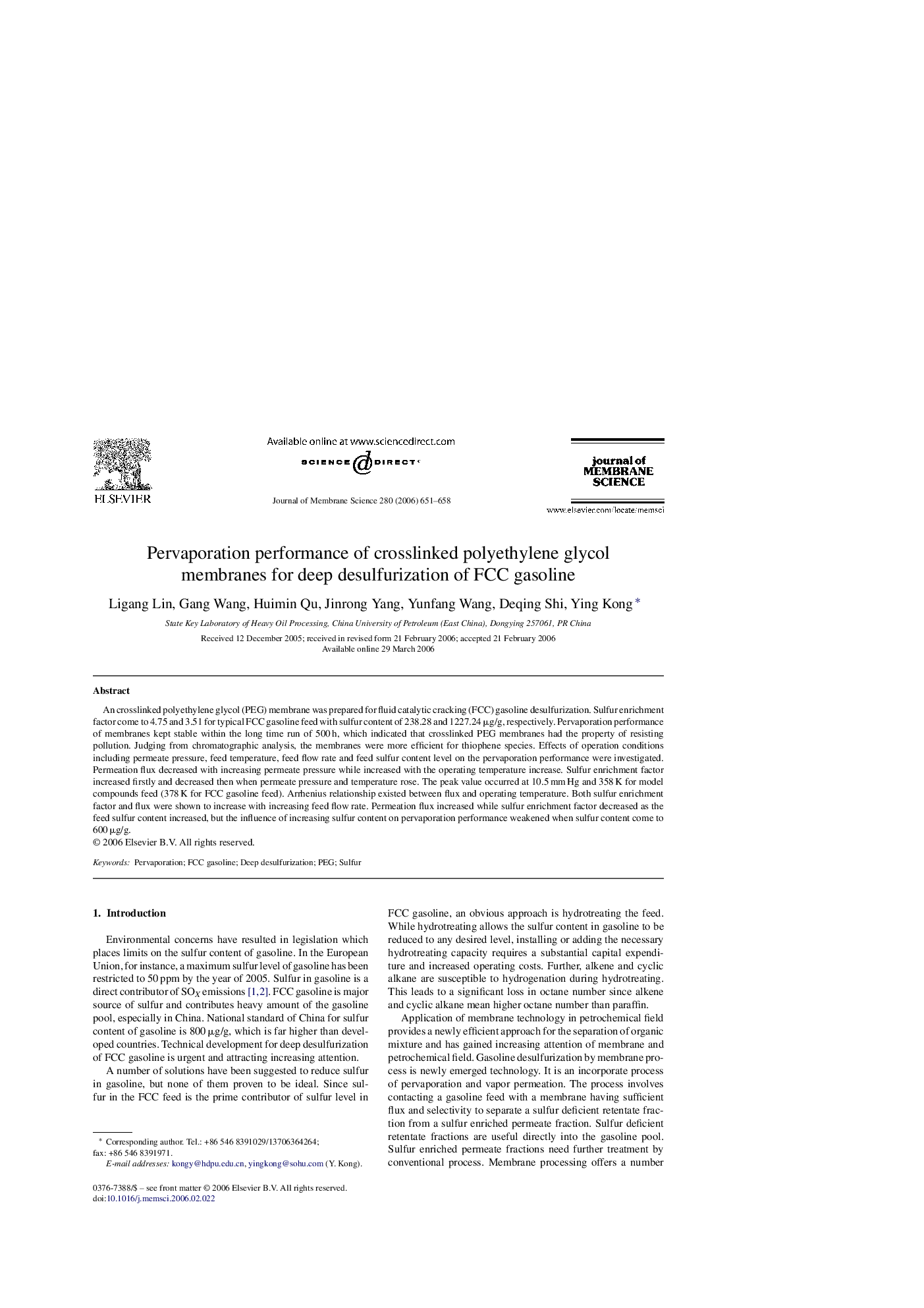| Article ID | Journal | Published Year | Pages | File Type |
|---|---|---|---|---|
| 638894 | Journal of Membrane Science | 2006 | 8 Pages |
An crosslinked polyethylene glycol (PEG) membrane was prepared for fluid catalytic cracking (FCC) gasoline desulfurization. Sulfur enrichment factor come to 4.75 and 3.51 for typical FCC gasoline feed with sulfur content of 238.28 and 1227.24 μg/g, respectively. Pervaporation performance of membranes kept stable within the long time run of 500 h, which indicated that crosslinked PEG membranes had the property of resisting pollution. Judging from chromatographic analysis, the membranes were more efficient for thiophene species. Effects of operation conditions including permeate pressure, feed temperature, feed flow rate and feed sulfur content level on the pervaporation performance were investigated. Permeation flux decreased with increasing permeate pressure while increased with the operating temperature increase. Sulfur enrichment factor increased firstly and decreased then when permeate pressure and temperature rose. The peak value occurred at 10.5 mm Hg and 358 K for model compounds feed (378 K for FCC gasoline feed). Arrhenius relationship existed between flux and operating temperature. Both sulfur enrichment factor and flux were shown to increase with increasing feed flow rate. Permeation flux increased while sulfur enrichment factor decreased as the feed sulfur content increased, but the influence of increasing sulfur content on pervaporation performance weakened when sulfur content come to 600 μg/g.
